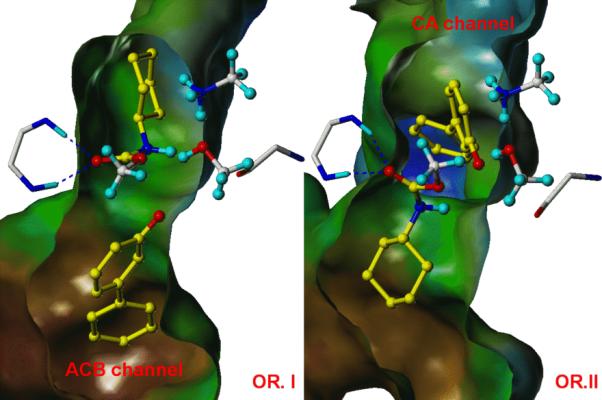Fig. 4.

Fatty acid amide hydrolase (FAAH) is a promising pharmaceutical target for the treatment of pain, anxiety and depression. QM/MM calculations on the formation of the covalent adduct between FAAH and the O-arylcarbamate inhibitor URB524 showed that reaction was only possible in one of the two possible binding modes shown here (OR. II), thus identifying the productive binding mode. This prediction was subsequently validated by X-ray crystallography.14 Figure reproduced from ref.15
